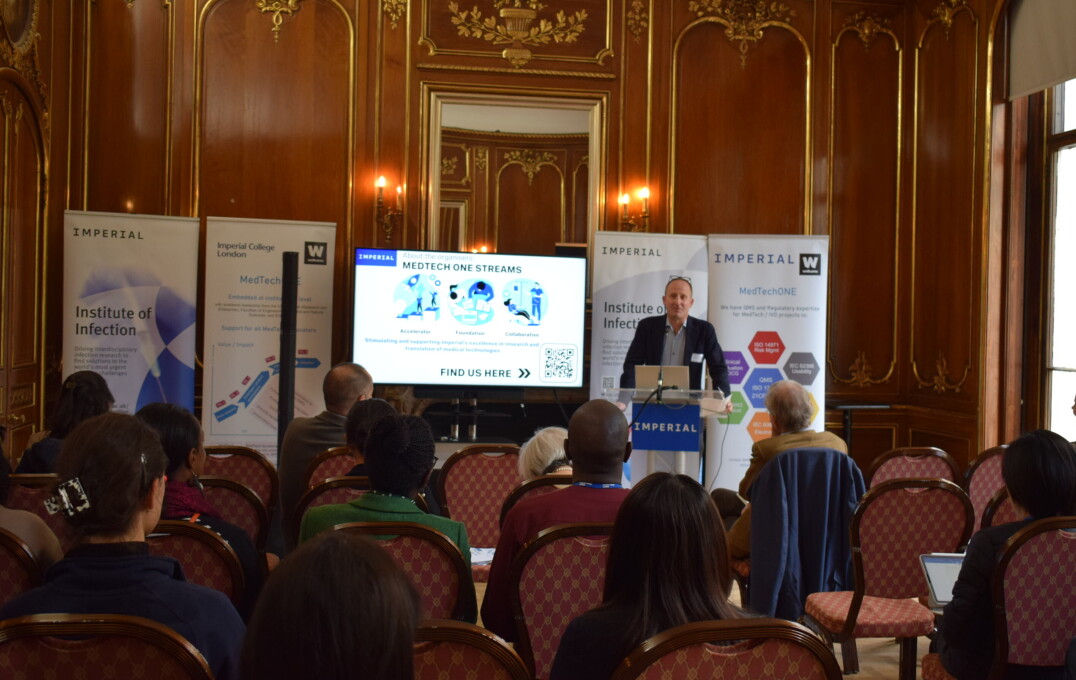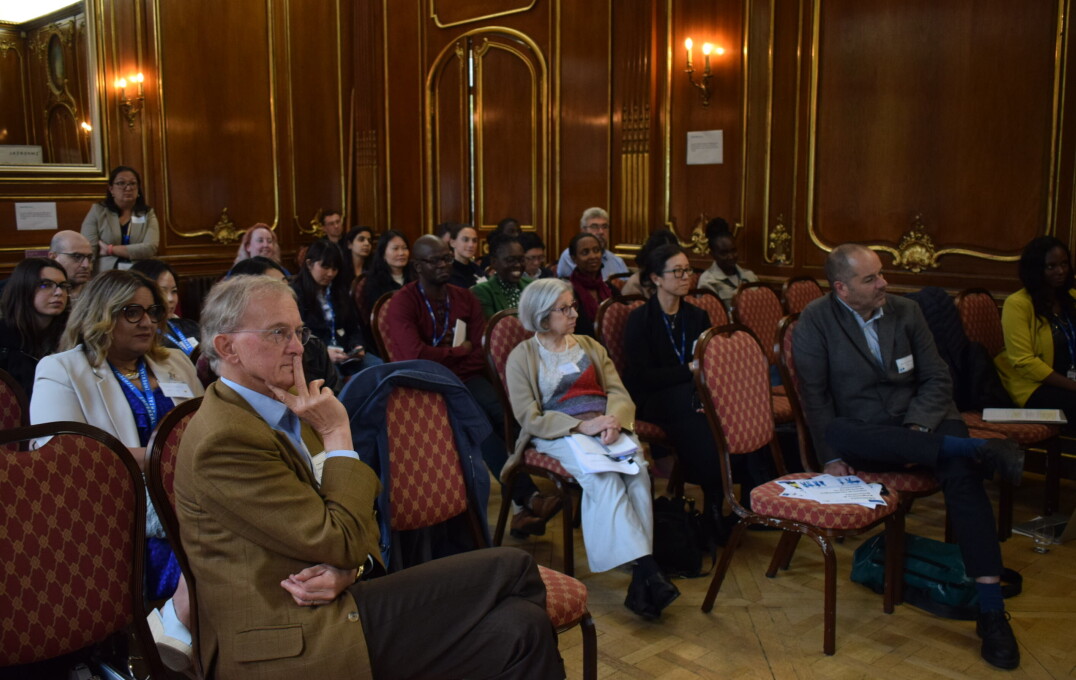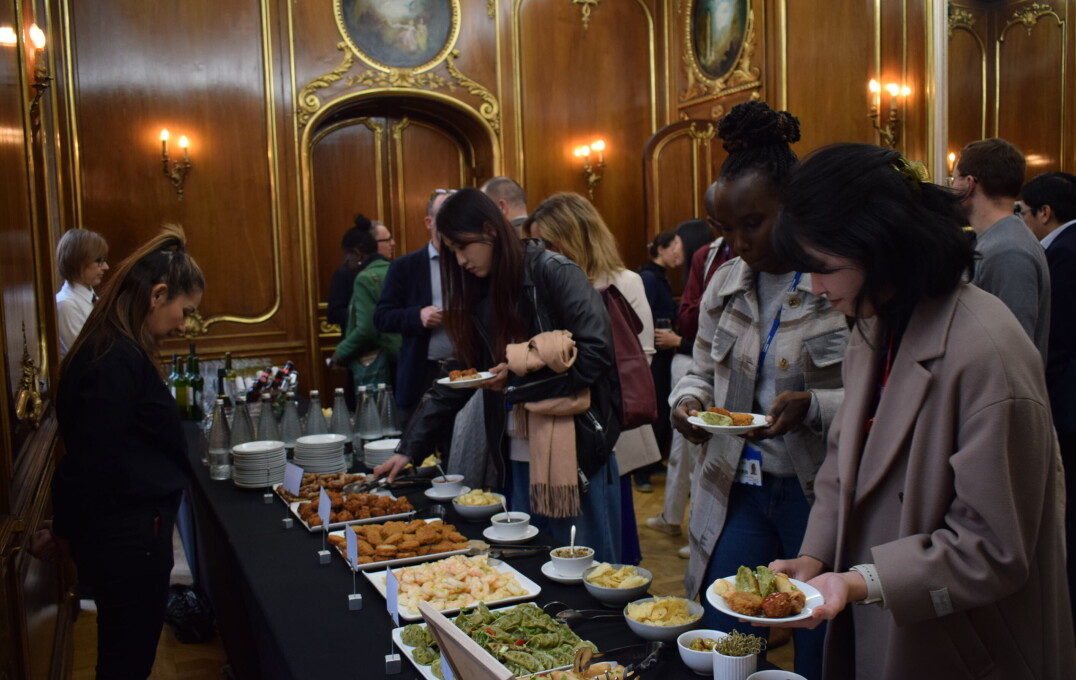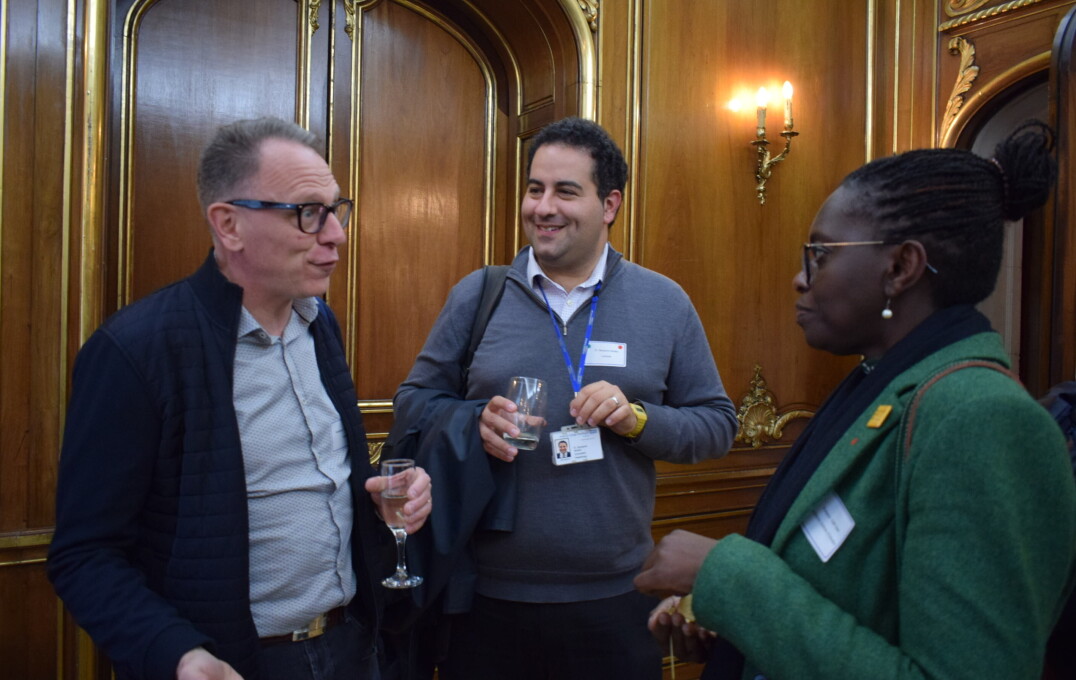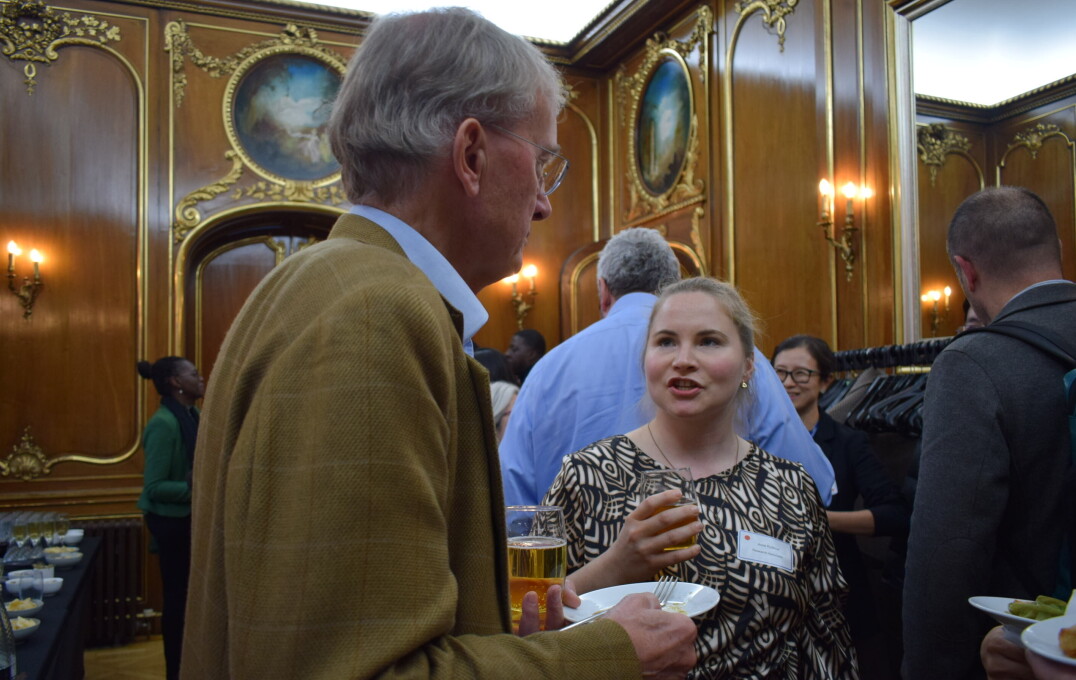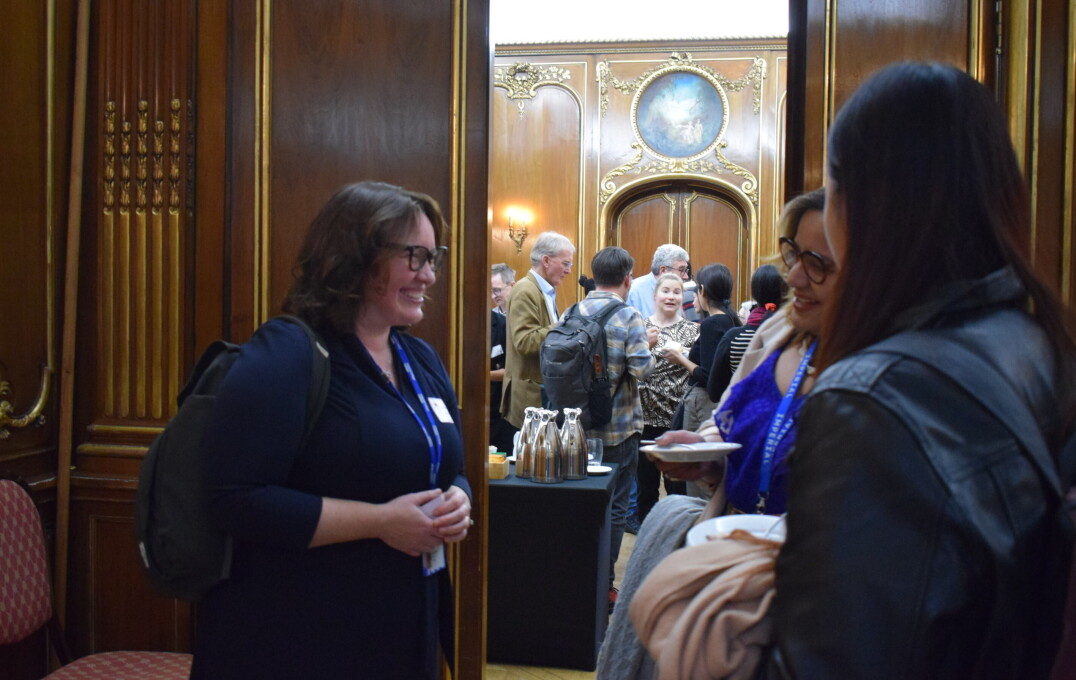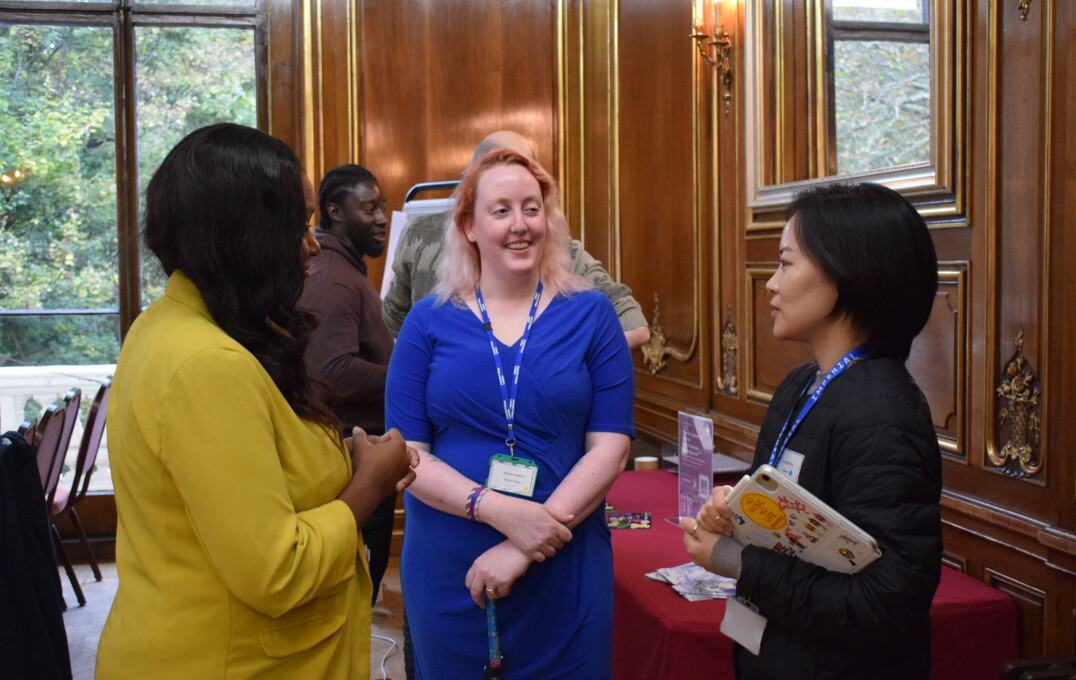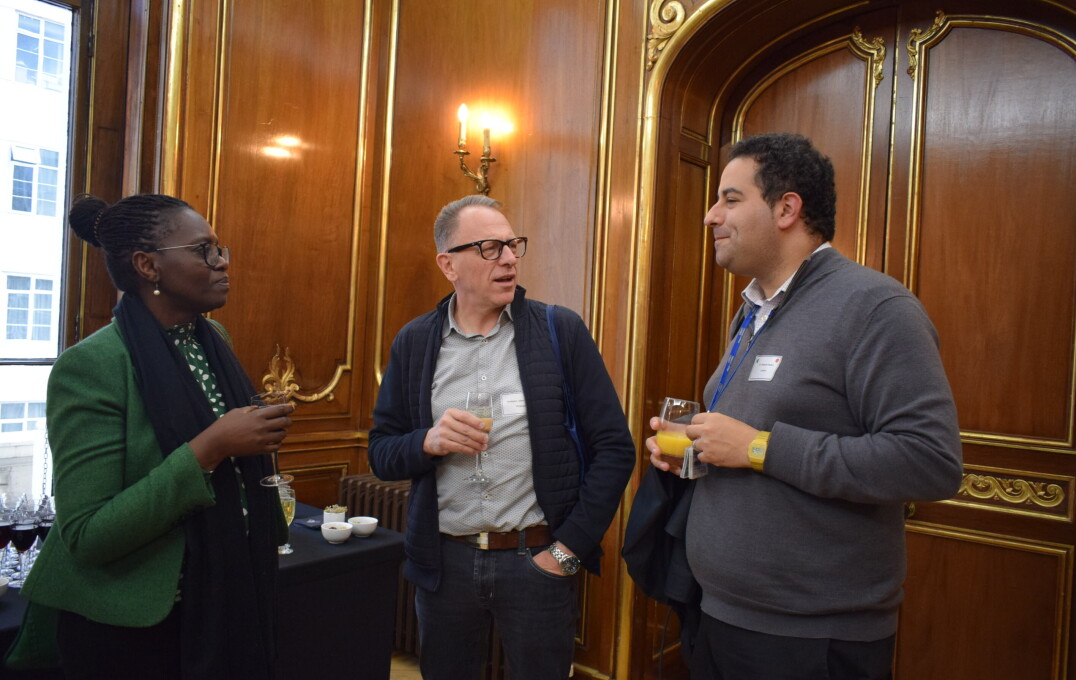Event summary: Clinician-scientist-engineer challenges workshop in infection
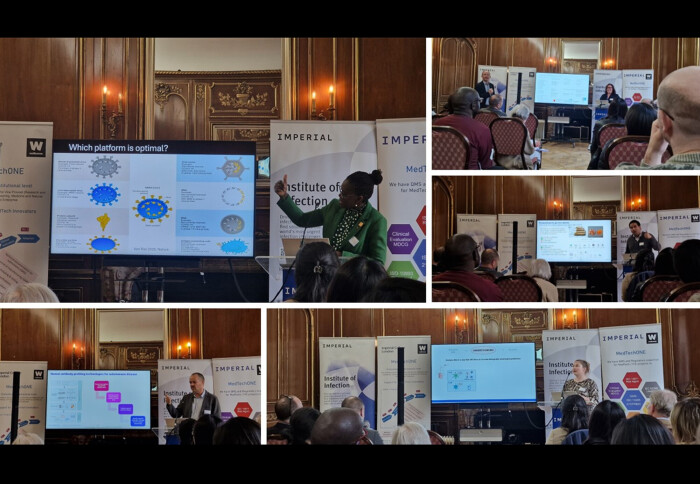
Leading infection experts came together to explore clinical challenges in infection and how Imperial’s interdisciplinary expertise can solve them.
In October, The Institute of Infection and MedTechONE co-hosted a clinical challenges workshop. Professor Graham Cooke chaired this meeting and there were introductionary addresses from Professor Daniel Elson and Professor Charles Bangham. The workshop brought together infection researchers, clinicians, engineers and artificial intelligence (AI) experts who are working on infectious diseases, including interventions, diagnosis, and treatment.
Five important challenges facing clinical infectious diseases were outlined, to call for engineering, technological, or AI solutions that could overcome them. The workshop provided a forum for further discussion and opportunities to network and identify potential cross-disciplinary collaborators.
Antigen arrays for diagnostics in lung transplantation
Lung transplants have the lowest survival rate of all organ transplants, with a 50% survival rate at five years post-transplant. This late graft failure can be caused by immune rejection of the graft itself, but can also be caused by infections such as Aspergillosis, an infection caused by a type of mould. Professor Darius Armstrong James (Department of Infectious Disease) described the multi-omic approaches that have identified signatures to differentiate patients based on infection and rejection states. His group is also investigating T-cell dependent-pathways in Aspergillosis and working to identify the antibodies that mediate the interplay between the fungal infection and rejection. He explained his vision to seek collaborators to develop high-density antigen arrays to detect different antibody specificity and distinguish different types of infection from graft rejection in organ transplantation, including identifying antigens directed against donor antigens. This, in turn, will help with early diagnosis.
AI for predicting immune responses for vaccinology
Professor Faith Osier (Institute of Infection and Department of Life Sciences) aims to use AI to inform vaccine development, particularly in the downstream steps of the pipeline, once the candidate antigen has been verified. Professor Osier posed the questions, "How can we take the guesswork out of choosing the most appropriate vaccine platform or adjuvant?", "Can we devise a more rigorous approach to identify the best route of administration (e.g., oral vs needle-based)?" and "Is there a way to use AI for clinical prediction, e.g., to identify people at risk of severe disease following infection?". Discussions focused on the feasibility and logistics of these clinical questions, including the need for thousands of data points to enable AI-based predictions.
AI-driven epitope prediction methods for bacterial vaccine development
The CHANTS study is an ongoing first-in-human challenge study focused on non-typhoidal Salmonella (NTS). In addition to collecting information to characterise the response to Salmonella infection, the study is also generating complex omics data. Dr Anna Rydlova (Department of Infectious disease) is interested in how valuable information can be extracted from these data sets to identify antigens that stimulate and drive a protective immune response. Dr Rydlova is seeking collaboration and expertise in protein language models (PLMs), reverse epitope mapping and other Deep Learning methods to enable identification and prediction of antigens for the development of effective bacterial vaccines.
Challenges in gut microbiome sampling and manipulation for clinical benefit
Faecal/intestinal microbiome transplant (FMT/IMT) is the standard of care for the gut bacterial infection Clostridioides difficile and holds promise as a treatment for other communicable and non-communicable diseases. Professor Julian Marchesi and Dr Benjamin Mullish (Department of Metabolism, Digestion and Reproduction) presented their research and the need to devise innovations to:
- 1) Collect samples of the gut microbiome, including technologies that would allow sampling from different parts of the gastrointestinal (GI) tract.
- 2) Transplant stool samples from a healthy donor to an infected patient by using methods that overcome the laborious processes required to manufacture encapsulated FMT/IMT products but that also have a higher patient acceptability than current practices.
Collaborators are being sought with expertise in encapsulation of biological materials, static removal, payload delivery to the correct part of the gut, and sampling of GI content (especially in different regions of the gut). Solutions from the audience included the use of 'pill-cam' robotics for biopsies and potential collaborations with centres such as the Helix Centre (which has developed a related device for bowel cancer screening) and the Dyson School for Design Engineering.
Detecting Human T-cell Leukaemia virus: A chance to break the cycle of transmission
Human T-cell Leukaemia virus (HTLV-1) is a viral infection which is subclinical in 90% of carriers but causes the highly aggressive malignancy called adult T-cell leukaemia/lymphoma (ATL) or a chronic inflammatory disease, HTLV-1-associated myelopathy (HAM) in a smaIl percentage of infected people. Dr Aileen Rowan (Department of Infectious Disease) described how measurement of an individual's viral burden - the proviral load - in peripheral blood mononuclear cells (PBMCs) can predict their risk of ATL or HAM.
Dr Rowan also described how the value of screening for HTLV-1 is now widely recognized because the infection can be prevented by avoiding transmission (e.g., from mothers to children) or treated using antiviral drugs, and the World Health Organisation has recently identified the virus as a significant public health threat. However, the existing methods of HTLV-1 testing have clinical challenges: serological diagnostics are associated with a high false positive rate and cannot provide information on whether the person is at risk from developing ATL or HAM, while nucleic acid testing is only available in specialised centres and is expensive. Dr Rowan made a call for a new generation of diagnostics that are cost-effective, can be used at the point of care, provide information on the individual’s risk profile, and can detect ATL early.
Making Connections
The event proved highly popular for networking and for identifying possible new interdisciplinary collaborations. Links were made between researchers at Imperial and beyond (e.g., Japan) and with centres of excellence at Imperial, including the NIHR HealthTech Research Centre in In Vitro Diagnostics, the Glycosciences Laboratory, the Helix Centre, and the Dyson School of Design Engineering. One attendee applauded the opportunity for the Imperial community to “steer towards a convergence of disciplines and areas of science and make best use of the existing capacity and capability already existing within".
If you have expertise or technology that could address the clinical challenges outlined above and are interested in collaborating, please contact either the researchers directly, Dr Mel Bradnam (Institute of Infection), or Dr Nikeysha Bell (MedTechONE).
Read more about
Article text (excluding photos or graphics) © Imperial College London.
Photos and graphics subject to third party copyright used with permission or © Imperial College London.
Reporter
Melanie Bradnam
Department of Brain Sciences
Natasha Khaleeq
Institute of Infection
